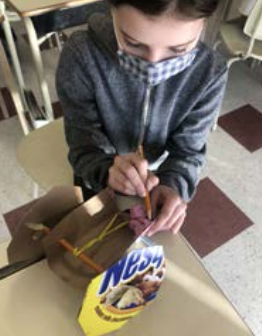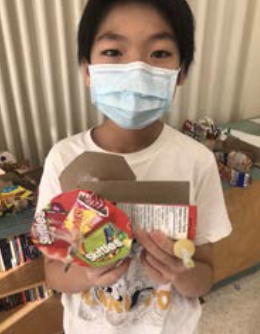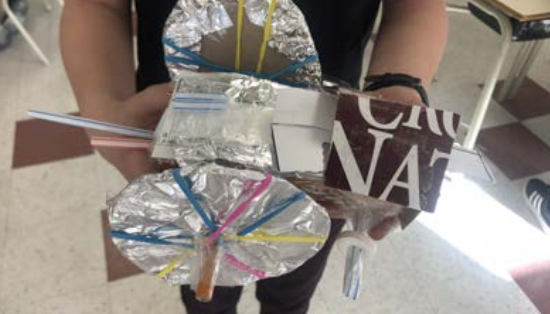Inspiring students to achieve success in the 21st century is a formidable feat for today’s educators. This focus permeates our efforts as we strive to foster confident, engaged, and resilient learners. Fundamental to these characteristics is grit, a term that has been gaining traction in the field of education. According to psychologist Angela Duckworth (2018), grit represents “passion and perseverance for long-term goals.” It is more than just talent—it requires stamina, determination, and persistence. Through Duckworth’s research across varied contexts, grit emerged as a significant predictor of success. Certainly, this is a quality worth nurturing in today’s youth. However, with ever-evolving societal realities and increasing complexity in the classroom, the real question remains: How can we inspire students to become confident and resilient learners? How can we develop grit?
 When posed with this question, Duckworth (2013) stated, “The best idea I’ve heard about building grit in kids is something called growth mindset.” Inspired by the work of Carol Dweck (2007), growth mindset is “the understanding that abilities can be developed” through focused effort and deliberate practise. Research has highlighted the benefit of growth mindset in fostering student resilience. Students with a growth mindset view failure as an opportunity to learn and improve. It is, therefore, imperative that teachers design educational activities to encourage this cycle of reflection and growth.
When posed with this question, Duckworth (2013) stated, “The best idea I’ve heard about building grit in kids is something called growth mindset.” Inspired by the work of Carol Dweck (2007), growth mindset is “the understanding that abilities can be developed” through focused effort and deliberate practise. Research has highlighted the benefit of growth mindset in fostering student resilience. Students with a growth mindset view failure as an opportunity to learn and improve. It is, therefore, imperative that teachers design educational activities to encourage this cycle of reflection and growth.
Developing confident students constitutes a primary goal of administrators and educators. In fact, school boards across Alberta have identified this as fundamental to student success. It is for this reason that the Calgary Board of Education has included it as part of the student report card, and many schools have selected the indicator “engages with learning with confidence and persistence” as a component of their School Development Plans. This well-being goal has guided the efforts of teachers and administrators at Fish Creek School (FCS). Fostered through regular conversations, educators at FCS have worked diligently to model a growth mindset and generate common language around confidence and persistence. This, coupled with intentionally-designed activities to develop grit, has contributed to the increased achievement in this area of student learning. As Ian Fero, principal of Fish Creek School, articulates, “It might not be specifically included in any curricular guides, but learning grit is an essential skill for all students. Just like most things in life, learning isn’t always predictable or easy. Being able to persevere through difficult situations is something that every student can take forward in their academic and professional lives.”
LEVERAGING STEM TO DEVELOP GRIT
Exploration of open-ended questions, innovative hands-on building activities, and tasks designed to prompt student thinking are common occurrences at Fish Creek School. Teachers regularly incorporate Maker Education into units of study. From designing pumpkin catapults in grade two to building electric cars in grade five, all classes at FCS participate in project-based learning and design thinking through STEM challenges. Through trial and error, students test theories, reflect on their failures, and modify their solutions. By maintaining a growth mindset, students show greater persistence with the challenge, and, when successful, student confidence increases.
Posing these challenges within the context of curricular concepts fosters student engagement in learning. Not only that, but all students, regardless of academic level, can meaningfully participate in the task. In fact, these activities often showcase the skills and abilities of individuals for whom academics are not a strength. Many times, it is these students who assume a leadership role, supporting their peers throughout the design-thinking process. This, in turn, helps to build their self-confidence, which is a powerful motivator and instigator for future effort.
CAPITALIZING ON THE MARS ROVER LANDING
 NASA’s Mars Perseverance Rover Mission in February of 2021 served as a just-right spark for students at FCS. Directly tied to curricular outcomes in Sky Science, the grade six teachers capitalized on this real-life application of concepts, as they joined millions of other individuals in the countdown to landing. Guided by lessons and activities provided by NASA’s Jet Propulsion Laboratory, the students learned about each aspect of the Perseverance Rover Mission, from planning to construction, launching to rover communication. Weekly videos featuring interviews with NASA’s top engineers and scientists provided insight into the tools and technology required to accomplish such an advanced mission. Embedded within the learning tasks each week were STEM challenges designed to reflect the engineering design process executed by the team at NASA.
NASA’s Mars Perseverance Rover Mission in February of 2021 served as a just-right spark for students at FCS. Directly tied to curricular outcomes in Sky Science, the grade six teachers capitalized on this real-life application of concepts, as they joined millions of other individuals in the countdown to landing. Guided by lessons and activities provided by NASA’s Jet Propulsion Laboratory, the students learned about each aspect of the Perseverance Rover Mission, from planning to construction, launching to rover communication. Weekly videos featuring interviews with NASA’s top engineers and scientists provided insight into the tools and technology required to accomplish such an advanced mission. Embedded within the learning tasks each week were STEM challenges designed to reflect the engineering design process executed by the team at NASA.
Engagement within the grade six classrooms was evident, as students worked diligently to design innovative solutions to meet the challenge. Prior to one STEM activity, students learned about Ingenuity, a robotic helicopter used to locate areas of interest on Mars’ surface; following this, they were required to modify a paper helicopter and observe its descent. Very quickly, students realized that small adjustments to the length and size of the helicopter’s blades resulted in different movement. They showed confidence in explaining their designs and what they noted about the manipulation of variables. As students documented and shared their observations with peers, their interest in achieving the proposed
outcome increased; in fact, several students requested additional materials and continued to experiment at home. Similar engagement was observed through other Maker Education challenges, as students worked to create an air-powered rocket using paper and a straw and a device to land a marble on a target. With each new attempt, the students showed determination and persistence, acknowledging the apparent“failure” as an important step in learning.
Creating an elastic band-powered cardboard rover was arguably the most involved challenge that the students faced. Before commencing this task, each student was required to generate a labeled diagram of their plan, and consider the objectives that their rover was set to accomplish. Relevant tools and technology were incorporated into their design, which showcased their understanding of the varied purposes for current and previous Mars missions. For some students, constructing the base model from cardboard proved difficult, while for others, the elastic band mechanism required focused effort and persistence. As in previous challenges, collaborative conversations supported individuals in persevering with the task and, again, provided an opportunity for student leadership. While some students spent time modifying their rover to allow for enhanced functionality, others experimented with design variables, such as the shape of the wheels or the size of the rover itself. Students documented their adjustments and recorded how these impacted the rover’s movement. As one student summarized, “Every time I ran into a roadblock it helped me change my design so it would work better next time.”
 Through these activities, students recognized the value of grit and the connection to Fish Creek School’s focus on confidence and persistence in learning. One student shared, “I think the purpose of these STEM challenges is to test our ability to persevere through difficulties. It really gives a taste of what real engineers do during design and testing of their machines.” Another commented, “STEM teaches us, after trial and error, to persevere and to achieve our goal.” By providing opportunities for students to build grit through relevant and meaningful tasks, teachers foster engagement in learning while nurturing the growth of confident, persistent, and resilient individuals. As educators, however, we must ask ourselves: How do we know if we’ve inspired student growth and achievement? How can we assess grit?
Through these activities, students recognized the value of grit and the connection to Fish Creek School’s focus on confidence and persistence in learning. One student shared, “I think the purpose of these STEM challenges is to test our ability to persevere through difficulties. It really gives a taste of what real engineers do during design and testing of their machines.” Another commented, “STEM teaches us, after trial and error, to persevere and to achieve our goal.” By providing opportunities for students to build grit through relevant and meaningful tasks, teachers foster engagement in learning while nurturing the growth of confident, persistent, and resilient individuals. As educators, however, we must ask ourselves: How do we know if we’ve inspired student growth and achievement? How can we assess grit?
THE ROLE OF ASSESSMENT
It is through assessment that teachers gain an understanding of the skills and abilities of their students; this not only provides insight into student learning but also guides instructional practices in the classroom. As an educator, it is important to acknowledge how analysis of a balanced body of evidence can contribute to a more comprehensive view of student achievement. As Davies (2001) highlighted, a body of evidence comprises observations, conversations, and products. Fortunately, STEM challenges present an opportunity to gather evidence related to confidence and persistence. When students are actively engaged in learning tasks, teachers are free to hone in on student conversations and document observations. Including these forms of evidence contributes to the validity of the assessment and provides students the opportunity to represent their learning through varied methods.
Conversations are valuable in revealing a student’s thoughts and perspectives. As students engage in collaborative discussions with peers, teachers can note their approach and how they navigate setbacks. Using prompting questions such as, “How did you demonstrate perseverance through this task?” or “What challenge did you face and how did you overcome this?” can provide insight into the strategies individuals employ and their persistence in learning. Asking students to record their responses on a sticky note before sharing provides tangible evidence of their contributions to class conversations. When possible, engaging in one-to-one interviews with learners throughout the challenge yields valuable evidence related to grit. However, providing opportunities for students to document their learning and experiences through audio or video recordings can be an effective substitute for real-time conversations.
Observations are a powerful measure of assessment, as they provide a context for the evidence collected. While teachers may opt to take photographs or video clips to refer to at a later time, anecdotal notes can support documentation of student learning. A checklist is also an effective method of recording observations, especially when success criteria have been pre-defined at each level of achievement. Developing checklists with “look fors” will support teachers in identifying individual student strengths and areas for growth. This can then be used guide instructional practices and next steps relative to confidence, persistence, and resilience in learning.
Grit—a single concept that holds so much potential for youth of the 21st century. Educators are continually seeking opportunities to foster development of confidence and persistence, considered integral to student learning and success. Embedding STEM challenges into classroom learning is an effective way to accomplish this. These hands-on activities not only develop perseverance and resilience, but also engage students, which allows teachers to gather a balanced body of evidence towards school goals. It is through assessment and analysis that teachers can determine relevant next steps as they strive to prepare young learners for the challenges they will encounter in today’s society.
References
Davies, A. (2001). Making classroom assessment work. Connections Publishing.
Duckworth, A. L. (2013, April). Grit: The power of passion and perseverance [Video]. TED. https://www.ted.com/talks/ angela_lee_duckworth_grit_the_power_of_passion_and_ perseverance?language=en
Duckworth, A. L. (2018). Grit: The power of passion and perseverance. Harper Collins Publishing, Ltd.
Dweck, C. S. (2007). Mindset: The new psychology to success. Ballantine Books.
ABOUT THE AUTHOR
Alaina Crone
Alaina Crone is a Learning Leader with the Calgary Board of Education.
This article is featured in Canadian Teacher Magazine’s Spring 2021 issue.









